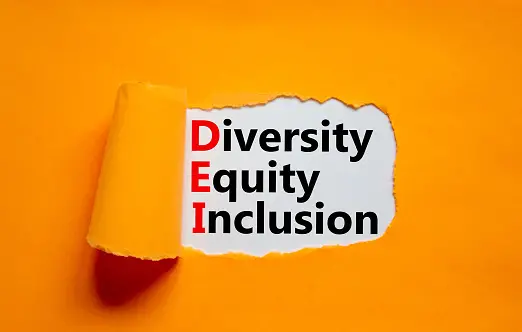Fostering Diversity, Equity, and Inclusion in a nonprofit organization? This article outlines the step by step procedure in fostering diversity, equity and inclusion in a nonprofit organization.
Diversity, equity, and inclusion (DEI) are crucial components of a successful and thriving nonprofit organization. A diverse and inclusive workplace can lead to a wider range of perspectives, ideas, and approaches, resulting in better decision-making and increased innovation.
How do you foster diversity, equity, and inclusion in a nonprofit organization?
Here are some practical steps to foster DEI in a nonprofit organization:
- Establish a clear DEI mission and values: Your organization should have a clear and publicly stated mission and set of values around DEI. This could include a commitment to hiring and promoting a diverse workforce, creating inclusive programs and services, and addressing systemic barriers to equity.
- Assess current DEI efforts: Take a close look at your organization’s current DEI efforts and identify areas for improvement. This could involve conducting surveys or focus groups with employees, analyzing demographic data, and examining existing policies and practices.
- Implement DEI training: Provide regular DEI training for all employees, including topics such as unconscious bias, cultural competence, and microaggressions. This can help create a shared understanding of DEI and promote a culture of inclusivity.
- Encourage diverse representation in leadership: Ensure that your organization’s leadership team reflects the diversity of your community, including representation from underrepresented groups. This can help create a culture of inclusivity and ensure that diverse perspectives are incorporated into decision-making processes.
- Foster an inclusive workplace culture: Create an environment where all employees feel valued, respected, and heard. This could involve encouraging open and honest communication, creating opportunities for employee engagement and feedback, and addressing instances of bias or discrimination when they arise.
- Partner with diverse organizations and communities: Work with organizations and communities that represent diverse perspectives and experiences. This could involve collaborating on programs and services, engaging in shared advocacy efforts, and building relationships with local leaders and community members.
- Evaluate and adjust DEI efforts regularly: Regularly evaluate your organization’s DEI efforts and adjust as needed. This could involve monitoring demographic data, conducting employee surveys, and soliciting feedback from stakeholders.
Practical examples of steps a nonprofit organization can take to foster diversity, equity, and inclusion:
- Diversify your recruitment efforts: Make a concerted effort to reach out to and attract a diverse pool of job applicants. This could involve partnering with organizations that serve underrepresented communities, hosting job fairs in diverse neighborhoods, and advertising job openings on websites and platforms that reach diverse audiences.
- Offer flexible work arrangements: Offer flexible work arrangements, such as flexible schedules or the option to work from home, to accommodate employees with diverse needs and obligations. This can help create an inclusive workplace culture and increase retention of diverse employees.
- Celebrate and recognize diverse holidays and cultures: Celebrate and recognize diverse holidays and cultural events in the workplace. This could involve hosting cultural potlucks, promoting awareness of diverse holidays, or inviting employees to share their cultural traditions with others.
- Provide language support services: Provide language support services, such as translation or interpretation, to ensure that employees with limited English proficiency can fully participate in the workplace.
- Encourage diverse representation on committees and teams: Encourage diverse representation on committees and teams within your organization, including those that make key decisions and shape organizational strategy.
- Provide mentorship and leadership development opportunities: Provide mentorship and leadership development opportunities for employees from underrepresented groups, including opportunities to attend conferences, participate in trainings, and connect with industry leaders.
- Allocate resources for DEI initiatives: Allocate resources, including staff time and budget, to support DEI initiatives, such as cultural competency trainings or community outreach efforts.
By taking these steps, a nonprofit organization can create a more diverse, equitable, and inclusive workplace culture and better serve its mission and the communities it serves.
Top of Form







Your article helped me a lot, is there any more related content? Thanks!
Your point of view caught my eye and was very interesting. Thanks. I have a question for you.